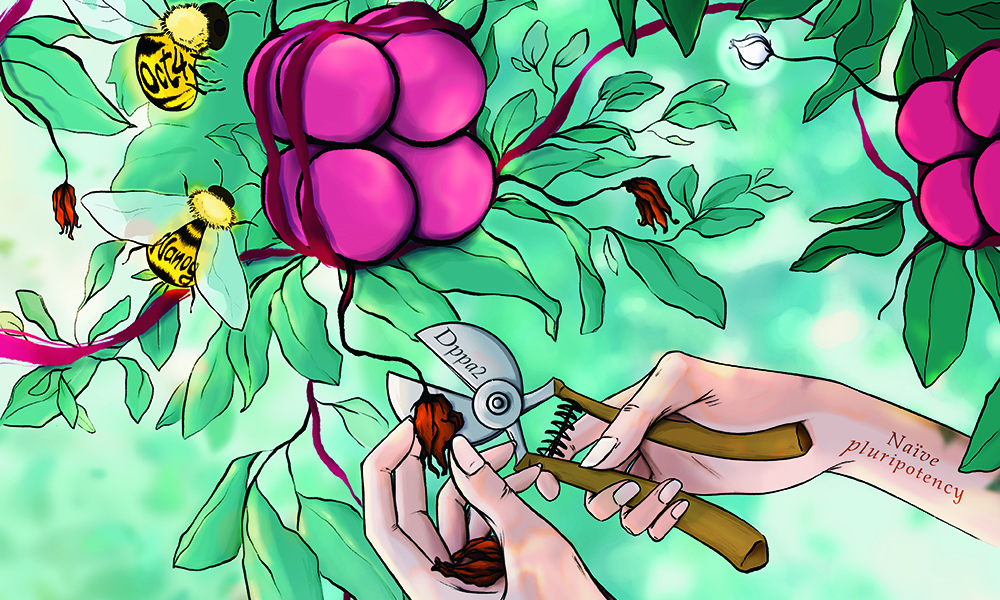Epigenetic inheritance is gated by naïve pluripotency and Dppa2
EMBO Journal 4 April 2022
10.15252/embj.2021108677
Recent studies from the Hackett group at EMBL Rome have revealed new insights on the mechanism regulating transmission of non-genetic information during embryonic development, and inspired a scientific illustration

Epigenetic modifications are reversible alterations of DNA structure. Examples include DNA methylation and modification of histones, the DNA binding proteins that control chromatin structure. These changes regulate gene expression in order to maintain cellular identity. Patterns of epigenetic modifications also respond to environmental factors, and can potentially cause changes in gene activity that are carried through cell divisions or even across generations – a process known as epigenetic inheritance. However, the prevalence of such epigenetic inheritance and the mechanisms regulating the process are still unclear.
The Hackett group at EMBL Rome used a precision epigenetic editing strategy to reproduce environmentally-induced epigenetic modifications in vivo and tracked their inheritance to study the molecular factors responsible for this process.
“Our results show that the period of naïve pluripotency during early mammalian development prevents transmission of abnormal epigenetic modifications to offspring. We found this safeguarding mechanism works, in part, through a chromatin factor called DPPA2,” said Jamie Hackett. “The system helps to ensure a pristine epigenome that is primed for embryonic development is inherited.”
In contrast, the scientists observed that during later stages of development when cells are differentiated, acquired epigenetic modifications can propagate. As an example, they showed that induced epigenetic modifications that are able to promote tumor onset can be inherited by daughter cells during development. This previously undescribed mechanism could help understand susceptibility towards environmentally induced diseases, such as some cancers.
The Hackett group study was recently published in The EMBO Journal, and served as inspiration for a cover illustration produced in-house. Marzia Munafò, a postdoc in the Hackett group, merges her passion for drawing and science by creating scientific illustrations.
She explained the process behind the illustration summarising the group’s paper: “The first step in creating a scientific illustration is usually a briefing with the scientists. In this case it was easy, since I am also part of the research group, and I already knew the details of the study.” During the initial brainstorming, Valentina Carlini, former PhD student in the Hackett group and first author of the paper, came up with the metaphor of a pruning process to explain the role of the DPPA2 protein on the epigenome of pluripotent cells.
After collecting the scientific details, the illustrator starts an abstraction process, extrapolating key scientific concepts and associating them with visual objects. “That’s a very interesting mental exercise,” said Munafò, “And it’s totally different from what we do in the lab, which is based on experimental observations and logical reasoning.”
Her final challenge was to transform the mental image into an illustration that is both scientifically sound and visually appealing. The result of this process is a beautiful image that summarizes the main findings of the study: the genome of the developing embryo is represented in the picture by a flowering tree, where histones are the fruits. Dppa2 acts as scissors, removing dried flowers, a metaphoric representation of aberrant histone modifications being erased during the naïve pluripotency phase.
EMBO Journal 4 April 2022
10.15252/embj.2021108677